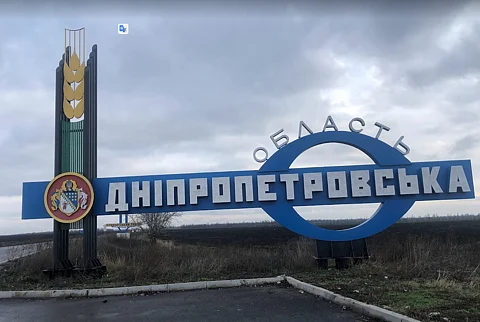

Russian forces entered Ukraine’s Dnipropetrovsk Oblast for the first time on Wednesday, marking a significant expansion of Russia’s military footprint since the launch of its Special Military Operation in February 2022.
Video circulated on social media showing Russian troops crossing the administrative border from Donetsk into Dnipropetrovsk, a line fortified with barbed wire. The advance reportedly took place near the town of Novomykolaivka, which sits directly on the border and was captured by Russian forces earlier in the day.
With this development, Dnipropetrovsk becomes the seventh Ukrainian region with confirmed Russian military presence. Russian troops are now positioned less than 10 miles (14 km) from Mezhova, a critical Ukrainian logistics hub in the region. They are also within 4 miles (6.25 km) of Novopavlivka, another key settlement.
The fall of either town could open the door for a deeper Russian incursion across the flat and rural terrain of eastern Dnipropetrovsk—terrain far more conducive to offensive maneuvers than the rugged, urban, and river-crossed landscape of Donbas.
While Russian forces have approached the borders of Dnipropetrovsk in recent months, they had either redirected their offensives or been stalled due to Ukrainian resistance. Wednesday’s breakthrough suggests a possible shift in strategy.
The timing of the advance comes amid growing speculation over Russia’s long-term intentions, particularly after U.S. President Donald Trump took office in January. Many had anticipated a potential Russian pause, especially since Moscow has not formally claimed Dnipropetrovsk as it has done with the four regions of Donetsk, Luhansk, Zaporizhzhia, and Kherson.
However, the incursion may signal that Moscow is willing to expand its territorial control beyond officially annexed regions if diplomatic negotiations fail to yield concessions.
Last Friday, during a two-hour meeting between Russian and Ukrainian delegations in Istanbul, Russian negotiators reportedly warned that refusal by Ukraine to withdraw from the four occupied regions would lead to Russia expanding its demands. According to sources on both sides, Dnipropetrovsk was mentioned explicitly as a potential target in future offensives.
This latest development may complicate efforts by the Trump administration to mediate an end to the war and could intensify pressure on Ukraine as it faces the prospect of a broadened Russian campaign.